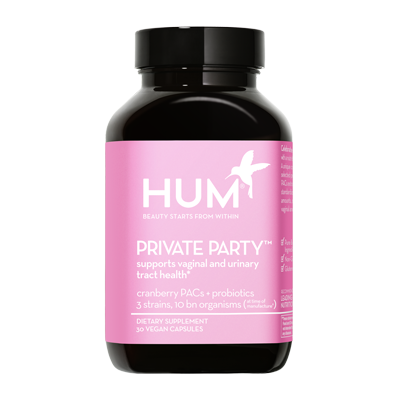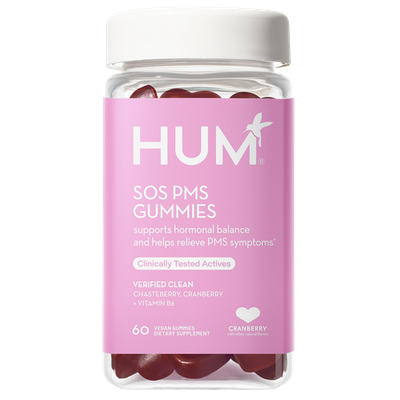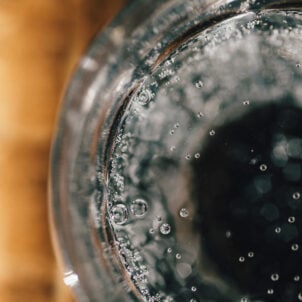When you enter a new life stage, your hormones change with you. Female hormones, in particular, evolve through your lifespan to support puberty, pregnancy, menopause, and beyond. Understanding hormones, let alone how to manage them, can seem complicated.
Think of this guide as your hormone manual that breaks down female hormones and provides tips on how to navigate them throughout your different life stages.
What are hormones?
Hormones are an umbrella term for chemical substances that carry messages and facilitate different functions throughout the body.
Sex hormones, also known as reproductive hormones, are a more specific group of hormones. These hormones play a major role in the major life stages including puberty, pregnancy, and menopause. They also influence sex drive and sperm production.
Everyone has the same sex hormones in their body, regardless of gender. Your gender, however, will influence hormone amounts, production sites, and their roles within the body. This is why sex hormones are commonly referred to as “female hormones” or “male hormones”.

Female hormones
The female hormones that play a key role in the major life stages include estrogen, progesterone, follicle stimulating hormone, and luteinizing hormone.
Here’s a breakdown of everything that you need to know about each female hormone:
Estrogen: The Queen Bee
The top female hormone is estrogen. Estrogen mainly works to regulate the menstrual cycle and oversee reproductive health.
During puberty, estrogen leads the development of sexual characteristics, including breast development and the start of the menstrual cycle. During the menstruation years, estrogen fluctuates monthly and works closely with other hormones to prime the body for ovulation and pregnancy. Then, estrogen levels taper to transition the body into menopause.
Interestingly, estrogen’s influence extends beyond reproduction. It also plays a key role in the maintenance of bone density and heart health.
Progesterone: The Calming Companion
Like estrogen, progesterone is produced in the ovaries and plays a key role in reproductive health.
After estrogen preps the body for a possible pregnancy during the first half of the menstrual cycle, progesterone steps in to prepare the uterus lining to receive a fertilized egg. If the egg is not fertilized, progesterone levels drop, signaling the uterine lining to shed. This shedding is what initiates a menstrual period. If pregnancy does occur, progesterone levels stay elevated to further support the pregnancy.
Additionally, progesterone is vital in managing mood. It acts as a natural mood regulator by exhibiting a calming effect. On the other hand, drops in progesterone during the menstrual cycle and menopause can have negative effects on mood.
Follicle Stimulating Hormone: The Cycle Conductor
Follicle-stimulating hormone, or FSH, is made in the pituitary gland of the brain. Like all female hormones, it has a significant influence over reproductive health, particularly fertility and menstruation.
Essentially, FSH kicks-off the menstrual cycle. FSH levels begin to rise which cues the ovaries to start preparing an egg for ovulation. This process requires the stimulation of the egg-containing follicle – hence its name, “follicle-stimulating hormone”.
Luteinizing Hormone: The Key To Ovulation
Luteinizing hormone, known as LH, is also produced in the brain’s pituitary gland. FSH essentially functions as the key to ovulation.
During the first half of the menstrual cycle, LH and FSH work together to stimulate the growth of a follicle (egg) in the ovaries. As the immature egg develops, estrogen levels begin to rise. Once estrogen levels rise sufficiently, a surge in LH occurs which signals the matured egg to be released from the follicle. This is known as ovulation and the start of the luteal phase.
But LH doesn’t stop there – the LH surge also helps transform the empty follicle into a structure known as the corpus luteum. The corpus luteum is responsible for making progesterone, which we know preps the lining of the uterus for a potential pregnancy. If pregnancy does not occur, the corpus luteum breaks down, causing a drop in progesterone and the start of a new menstrual cycle.
Managing Hormones in Your 20’s
During your 20’s, hormones such as estrogen and progesterone usually follow a predictable pattern. As such, many women experience relatively regular menstrual cycles. The word relative is key since regular can feel a little different for everyone.
This may also be the time that you start to recognize patterns or symptoms that occur monthly like clock-work. For many, this includes physical and emotional changes that are linked to hormonal fluctuations that occur as part of your menstrual cycle.
For instance, estrogen and progesterone fluctuate during the middle of your menstrual cycle in anticipation of a possible pregnancy. These hormonal ups and downs, particularly during the luteal phase, can cause uncomfortable symptoms including breast tenderness, mood changes, and skin blemishes.

Fortunately, implementing simple lifestyle and dietary tips can play a significant role in helping you maintain hormonal balance during this time. Here’s how you can help support a healthy hormonal balance:
- Incorporate physical activity into your daily routine
- Manage your stress levels with mindfulness practices like meditation or yoga
- Eat a balanced diet, particularly one that emphasizes healthy fats – think nuts, avocados, and fish. Also, prioritize whole foods like fruits, vegetables, whole grains, and lean proteins.
Embracing Hormonal Changes in Your 30’s
While each woman’s hormonal timeline can vary, your 30’s are typically when reproductive hormones start to shift, causing a gradual decline in fertility.
For example, this decade marks the start of subtle fluctuations in estrogen, progesterone, and FSH. As a result, the amount and quality of eggs in the ovaries slowly decrease. Some women may even notice that their once regular menstrual cycle is suddenly irregular or riddled with PMS symptoms.
Whether you are planning to conceive or simply looking to keep up your hormonal health, there are many ways to support reproductive hormones. In addition to regular check-ups with a healthcare provider who monitors your hormones, we suggest implementing these tips into your routine:
- Support your emotional well-being with healthy routines such as getting enough sleep, exercising, spending time with loved ones, and being proactive about managing stress.
- Continue eating a balanced diet, particularly one that emphasizes healthy fats – think nuts, avocados, and fish. Also, prioritize whole foods like fruits, vegetables, whole grains, and lean proteins.
- Ease PMS symptoms with chasteberry extract (found in HUM’s SOS PMS Gummies)
Navigating Hormonal Shifts in Your 40’s and 50’s
These decades are all about transitioning away from the menstrual cycle and into menopause. During these stages, estrogen and progesterone levels decline significantly. Usually, perimenopause begins in a woman’s late 40s to early 50s. But as with all things hormonal, the exact timing can vary.
Perimenopause is the phase that occurs before menopause begins. Some women can be in perimenopause for months while others several years. This phase is marked by scattered, less frequent periods and the onset of menopause symptoms. Once 12 consecutive months have passed without a period, menopause has officially begun.
The hormonal changes that occur during menopause can trigger a variety of uncomfortable symptoms. A few of the most common menopause symptoms include:
- bladder problems
- hot flashes
- joint & muscle pain
- low sex drive
- mood swings
- sleep disturbances
Moreover, the drop in estrogen levels can lead to lower bone density, making women more susceptible to osteoporosis.

Fortunately, building on the good lifestyle habits from your 20’s and 30’s can help you manage these changes. In terms of diet, here are a few ways you can navigate these hormonal shifts:
- Eat more foods containing phytoestrogens. These include plant-based foods such as plums, beans, soybeans, and tea.
- Prioritize bone health by eating more calcium and vitamin D. Think dairy, leafy greens, and fortified foods like plant-based milks.
- For menopause symptoms, introduce ingredients like Siberian rhubarb, grape seed extract, and L. plantarum DR7 (a patented probiotic). These ingredients have been shown in numerous clinical studies to provide menopausal symptom relief. All three can be found in HUM’s Fan Club formula.
- Make sure to also minimize dietary triggers for hot flashes, the most well known menopause symptom like caffeine, alcohol, and spicy foods.
Beyond 50: Embracing Hormonal Changes
Although menopause is over, the importance of hormonal balance for overall health and well-being is of the utmost importance.
As mentioned before, bone health can suffer as a result of low estrogen levels. Poor bone density can make women at risk for osteoporosis. Additionally, estrogen plays a role in protecting the heart. But with lower estrogen levels, postmenopausal women may find themselves at higher risk for certain heart conditions.
One of the best ways to support bone and heart health (in addition to the aforementioned diet tips), is by doing weight-bearing exercise such as weight lifting or pilates. Walking, jogging and dancing are also beneficial for healthy cardiovascular function and bone density.
In addition, regular check-ups with healthcare providers can help monitor heart health, bone density, and any other potential health concerns. With the right care, diet and lifestyle choices, women can continue to thrive in their post-menopausal years.
Conclusion
Remember, every woman (and their hormonal timeline) is unique and what works for one may not work for another. Learning the journey that female hormones go through throughout a woman’s life stages is key for supporting optimal hormonal health. Tuning into one’s own body and implementing nutrition and lifestyle tips can set you up for hormonal success.
If you have questions or concerns about your hormones, make sure to consult with your health care provider for personalized support.











